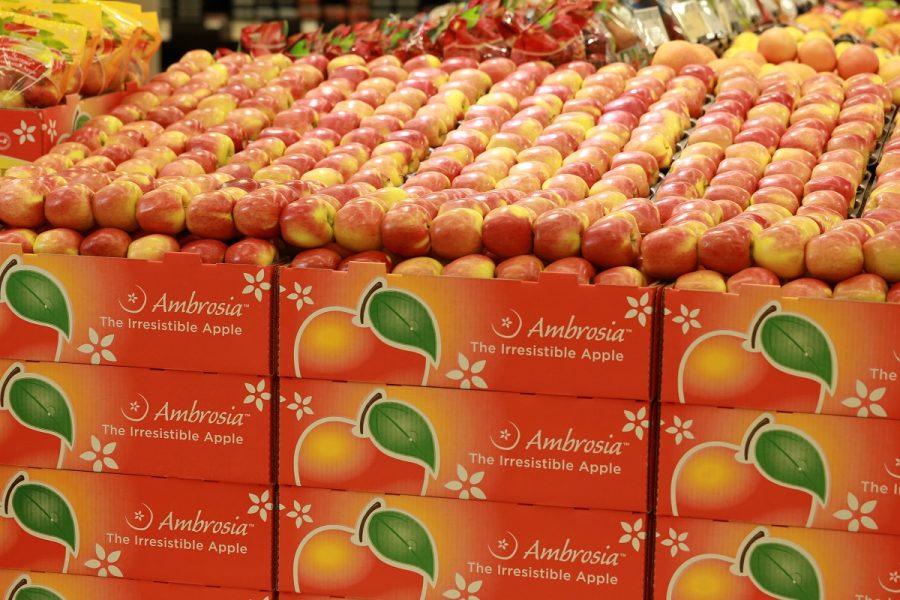A Sweet Success: What Changed the Apple Industry
December 17, 2018
By Julia Niehoff
Catchy names, logos, and slogans. These are not for a sports team, a T.V. show, or even a upcoming event. The buzz that is generated are for apples. Yes, the ones that you have been eating since your childhood: they are being rebranded. Enticing names like “Sweet Tango”, “Opal”, “Jazz”, “Evercrisp’ and “Kanzi”, are just a few examples of how our produce in supermarkets have went from unbranded to a industry of cutthroat competition.
Farmers for seemingly millennia have been searching for the perfect apple. As time has gone by, staples like the traditional “Red Delicious” have been depleted both literally and in the popularity of consumers as the agriculture industry chooses to produce larger yields, longer shelf life, and lower costs instead of flavor. Many apples, beyond the Red Delicious, fell into the trap of mass production ending up in American supermarket and the hands of consumers. When dissatisfaction arose with the lack of diversity and different breeds, resulting in lackluster taste, researchers scrambled for a new option.
One of these, which created a splash in the market was the Honeycrisp. A 1991 Midwestern local newspaper described it’s realse as the “Midwest’s Apple Sensation”. It exclaimed and praised this breed of apple as a solution to all crises, both flavor-related and not: “The Honeycrisp becomes a star to the area’s struggling orchards.” This success that farmers experienced was thanks to over 30 years of development to achieve its juiciness, crunchiness, and sweetness. Although it was more expensive, it was still in great demand. As the better taste translated directly into greater monetary success, growers gradually switched to these branded options. This changed the industry; growers now realized that customers will pay a premium for a better apple.
So, producers experimented with genetic modification and breeding. With this, patents on specialty apples began to surge.
Growers, in order to plant and grow these specialty apples usually had to pay per patented tree and a portion of the sales went to the use of the trademarked name. They were also put underneath regulations to test their texture, sugar content, and appearance to ensure that they were up to par. So although two apples may be from the same tree, they may go by different names and prices.
In the agricultural industry, in order to create brand loyalty, seemingly everything at the supermarket has a trademarked name, logo, and mascot for their fruit. Most famously, Cutie’s Oranges, the one with the clementine being zipped out of is own peel. (Pictured below.) In a 2016 study, for every one dollar in the agriculture market, nearly 40% of it for produce is going to branded alternatives. That trend is towards branded produce is growing rapidly.
Overall, this competition between companies for the best apple has lead to a plethora of new options. Next time you bite into an apple, think about the work that was organized behind it in order to make it possible.











